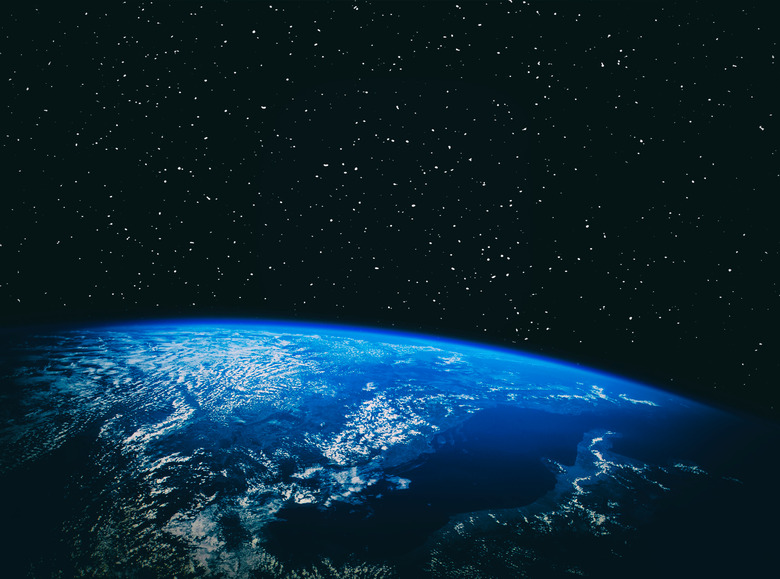Voyager 2 Finds Strange Interstellar Space Boundary
Voyager 2, a space probe that NASA launched in 1977, recently explored a strange boundary between the heliosphere and interstellar space. Scientists hope they can learn more about interstellar space and the rest of the Milky Way galaxy as the probe continues its journey.
Traveling Beyond the Heliosphere
Traveling
Beyond the Heliosphere
The heliosphere is the area of space that includes the solar system and where the solar winds have an impact. The heliopause is the border of the heliosphere, and interstellar space is outside of this boundary. Solar winds and the sun's magnetic field can't reach the interstellar space.
Voyager 2 is actually the second probe to reach interstellar space – Voyager 1 achieved this in 2012 – but it has provided new data about the area. Scientists finally have the chance to learn more about the edge of the solar system and the mysterious boundary that separates it from the rest of space.
"The Voyager probes are showing us how our Sun interacts with the stuff that fills most of the space between stars in the Milky Way galaxy. Without this new data from Voyager 2, we wouldn't know if what we were seeing with Voyager 1 was characteristic of the entire heliosphere or specific just to the location and time when it crossed," Ed Stone, a project scientist for Voyager, said.
What Is the Heliopause?
What
Is the Heliopause?
Located about 11 billion miles from the sun, the heliopause is a region that resembles a large bubble. It serves as the boundary between the heliosphere and interstellar space. However, the heliopause isn't a thick, invisible wall. Instead, it's a porous border that allows some particles to leak through.
"If the heliosphere is like a ship sailing through interstellar space, it appears the hull is somewhat leaky. One of Voyager's particle instruments showed that a trickle of particles from inside the heliosphere is slipping through the boundary and into interstellar space," NASA said.
The boundary allows particles to enter and exit the region, so it creates a mixture of heliosphere and interstellar space particles. Data from Voyager 1 showed interstellar particles entering the solar system, while data from Voyager 2 showed the opposite with solar particles leaving. Although Voyager 1 and 2 have expanded knowledge about the heliopause, many questions remain, such as the shape of the region.
Now that both Voyager 1 and 2 are moving past the heliopause, researchers would like to send a new probe to study the region. Currently, NASA doesn't have any missions that would send probes to the area next year.
Studying Interstellar Space
Studying
Interstellar Space
Although they left Earth 42 years ago, Voyager 1 and 2 aren't finished exploring and discovering new things. For example, Voyager 2 recently showed that the magnetic field was stronger in interstellar space, which surprised scientists. Researchers estimate the probes have about five years left before their instruments fail.
When NASA launched the two probes, the goal was to study the outer planets of the solar system. No one expected the probes to last this long or to reach interstellar space. It's clear that neither probe was designed for a longer mission into this region, but scientists plan to take advantage of the data they can gather.
The Interstellar Mapping and Acceleration Probe (IMAP) mission, which will start in 2024, may provide more insight about this region of space. It will include 10 instruments designed to measure the heliopause and cosmic rays. However, the craft will only be 1 million miles away from Earth, so it won't travel as far as the two Voyager probes.
Cite This Article
MLA
Bandoim, Lana. "Voyager 2 Finds Strange Interstellar Space Boundary" sciencing.com, https://www.sciencing.com/new-interstellar-space-boundary-13722910/. 9 November 2019.
APA
Bandoim, Lana. (2019, November 9). Voyager 2 Finds Strange Interstellar Space Boundary. sciencing.com. Retrieved from https://www.sciencing.com/new-interstellar-space-boundary-13722910/
Chicago
Bandoim, Lana. Voyager 2 Finds Strange Interstellar Space Boundary last modified August 30, 2022. https://www.sciencing.com/new-interstellar-space-boundary-13722910/
